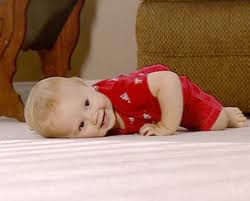PROTECT Your Home From Allergens
May 19, 2020Ceramic Tile vs Natural Stone
January 19, 2024We are not the first people to recognize the virtures of this versatile fiber. Cotton has been cultivated globally for thousands of years. From underwear to overcoats, clothing continues to be the most common use for cotton.
The same features that make cotton ideal for clothing make it perfect for upholstery. Like your clothing, all upholstery – including cotton – must be cleaned periodically for appearance and health. Furniture manufacturers recommend cleaning every 12-24 months. Failure to do so can result in an unwanted appearance change called soil staining. Soil staining occurs when soils, oils and pollutants adhere to the fiber and oxidize. This can result in permanent dulling of colors and changes to fabric texture.
Aside from a certain amout of normal shrinkage and potential wrinkles, most cotton clothing can be washed without any major problems. The babrics used in upholstery differ in a number of ways from clothing, including how we clean them. When used in upholstery, cotton may be blended with other fibers that have different characteristics and dye systems. Often the fabric is made up of multiple layer and can be quite thick. This creates challenges when cleaning. Ripples and distortion to the fabric texture are not uncommon.

Second, while most cotton clothing is designed to be washed in the laundry with lots of water, detergents and agitation, upholstery fabric is not. Lighter colored cotton upholstery may turn brown or yellow as the cellulose material in the cotton breaks down. Dyes may bleed or run. With some cleaning agents, cotton fabrics can actually degrade and become weak or even split.
There is also the potential that the fabric will shrink. This leads to cushion covers not fitting properly, skirts and dust ruffles curling or wrinkling and other appearance problems. That’s why you should never remove cushion covers to launder them.
You can hand your clothing on a line or put it in a dryer to dry. Not so with upholstery. The multiple layers of fabric, batting and cushion can cause slow drying, which could cause browning and dye bleed. We prevent such damage by using high velocity air movers to encourage rapid drying and carefully controlling the amound of moisture while cleaning.
Most fabrics can be cleaned safely with the right equipment, cleaning agents and proper training. One of the most important steps is to test the fabric for dye stability, browning and potential shrinkage, as well as inspect for other possible issues.
Taking all of this into account, some fabrics will require low moisture, controlled pH, and the gentle hand of an experienced upholstery cleaner to avoid damage. A fabric protector application should follow every cleaning. Your fabic will stay cleaner longer and resist permanent staining.
Take advantage of our 15% off Upholstery Cleaning for the month of March 2021


